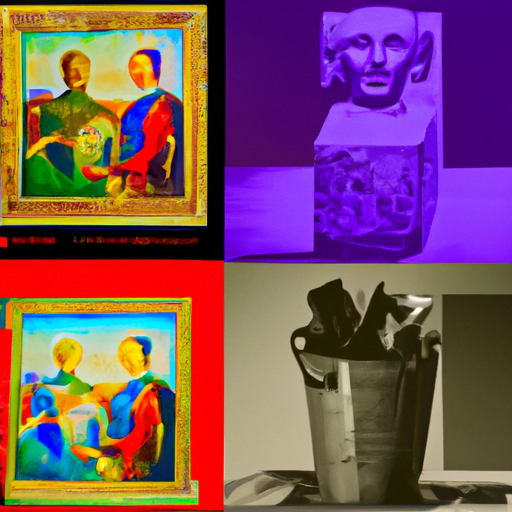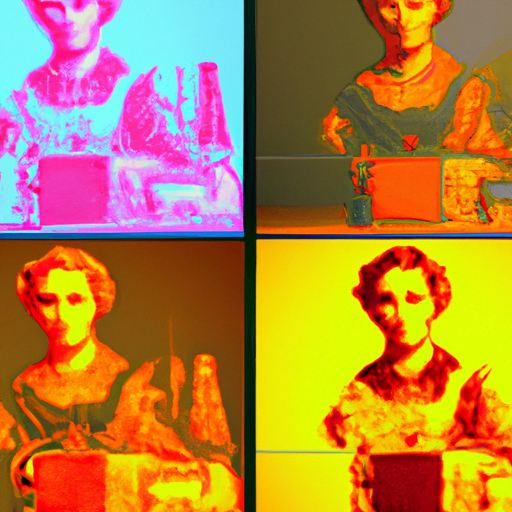
-
Table of Contents
- AI in Cultural Preservation: Digitally Restoring Artifacts
- The Power of AI in Cultural Preservation
- 1. Image Restoration and Enhancement
- 2. Text and Document Restoration
- 3. Virtual Reconstruction and Simulation
- Challenges and Limitations
- 1. Ethical Considerations
- 2. Data Availability and Quality
- 3. Technological Limitations
- The Future of AI in Cultural Preservation
- 1. Automated Artifact Analysis
- 2. Real-Time Monitoring and Preservation
- 3. Multilingual Translation and Interpretation
- Summary
AI in Cultural Preservation: Digitally Restoring Artifacts

Artifacts are invaluable pieces of our cultural heritage, providing a glimpse into the past and serving as a link between generations. However, the ravages of time, natural disasters, and human activities have taken a toll on these precious objects. Fortunately, advancements in artificial intelligence (AI) have opened up new possibilities for digitally restoring and preserving artifacts. This article explores the role of AI in cultural preservation, highlighting its benefits, challenges, and potential impact on the field.
The Power of AI in Cultural Preservation
Artificial intelligence has revolutionized various industries, and cultural preservation is no exception. By leveraging AI technologies, experts can now restore and preserve artifacts in ways that were previously unimaginable. Here are some key ways in which AI is transforming cultural preservation:
1. Image Restoration and Enhancement
One of the primary applications of AI in cultural preservation is image restoration and enhancement. AI algorithms can analyze damaged or deteriorated images of artifacts and reconstruct missing or damaged parts. For example, the Google Arts & Culture Lab developed an AI-powered tool called “Art Camera” that captures ultra-high-resolution images of artworks, allowing for detailed analysis and restoration.
Additionally, AI algorithms can enhance the quality of images by reducing noise, adjusting colors, and improving sharpness. This not only helps in preserving the visual integrity of artifacts but also enables researchers and historians to study them in greater detail.
2. Text and Document Restoration
AI technologies are also being used to restore and preserve ancient texts and documents. Optical Character Recognition (OCR) algorithms, combined with AI, can decipher faded or damaged text and convert it into digital formats. This enables researchers to access and study historical documents that were previously illegible.
For instance, the British Library’s “Turning the Pages” project uses AI-powered algorithms to digitize and restore ancient manuscripts, making them accessible to a wider audience. This not only helps in preserving the original documents but also facilitates research and knowledge sharing.
3. Virtual Reconstruction and Simulation
AI plays a crucial role in virtual reconstruction and simulation of artifacts. By analyzing existing fragments and historical data, AI algorithms can recreate missing parts of artifacts, reconstruct entire structures, or simulate how they would have looked in their original form.
For example, the Acropolis Museum in Athens used AI to digitally reconstruct the Parthenon’s missing sculptures. By analyzing the existing fragments and historical records, AI algorithms generated 3D models of the missing parts, allowing visitors to experience the monument as it would have been in ancient times.
Challenges and Limitations
While AI offers immense potential in cultural preservation, it also comes with its own set of challenges and limitations. It is important to be aware of these factors to ensure responsible and effective use of AI in the field:
1. Ethical Considerations
Preserving cultural artifacts involves making decisions about what to restore, how to restore it, and what level of intervention is appropriate. AI algorithms may not always align with cultural or ethical values, leading to potential controversies. For example, using AI to “complete” missing parts of an artifact may raise questions about authenticity and historical accuracy.
It is crucial to involve experts, historians, and local communities in the decision-making process to ensure that AI is used responsibly and in line with cultural sensitivities.
2. Data Availability and Quality
The effectiveness of AI algorithms heavily relies on the availability and quality of data. In the field of cultural preservation, historical artifacts are often scarce, and data may be incomplete or fragmented. This poses challenges for AI algorithms that require large datasets for training and accurate restoration.
Efforts should be made to digitize and collect comprehensive datasets to improve the accuracy and effectiveness of AI algorithms in cultural preservation.
3. Technological Limitations
While AI has made significant advancements, it is not a panacea for all restoration challenges. Some artifacts may be too damaged or deteriorated for AI algorithms to restore effectively. Additionally, the complexity of certain artifacts, such as ancient sculptures or delicate paintings, may require human expertise and manual restoration techniques.
AI should be seen as a complementary tool to human expertise, rather than a replacement. Collaboration between AI systems and human experts can lead to more accurate and nuanced restoration outcomes.
The Future of AI in Cultural Preservation
The potential impact of AI in cultural preservation is vast. As technology continues to advance, we can expect further developments and innovations in this field. Here are some potential future applications of AI in cultural preservation:
1. Automated Artifact Analysis
AI algorithms can be trained to analyze and categorize artifacts based on their historical context, style, and cultural significance. This can help in identifying and preserving artifacts that may have been overlooked or undervalued.
2. Real-Time Monitoring and Preservation
AI-powered sensors and monitoring systems can be deployed in museums, historical sites, and archives to detect environmental factors that may harm artifacts, such as temperature, humidity, and light exposure. This real-time monitoring can enable proactive preservation measures and prevent further deterioration.
3. Multilingual Translation and Interpretation
AI algorithms can be used to automatically translate and interpret ancient texts, inscriptions, and manuscripts in multiple languages. This can facilitate cross-cultural research and collaboration, making historical knowledge more accessible and inclusive.
Summary
Artificial intelligence is revolutionizing cultural preservation by enabling the digital restoration and preservation of artifacts. Through image restoration and enhancement, text and document restoration, and virtual reconstruction and simulation, AI is transforming the field. However, challenges such as ethical considerations, data availability, and technological limitations need to be addressed for responsible and effective use of AI in cultural preservation. The future of AI in this field holds promise, with potential applications including automated artifact analysis, real-time monitoring and preservation, and multilingual translation and interpretation. By harnessing the power of AI, we can ensure the preservation and accessibility of our cultural heritage for future generations.
